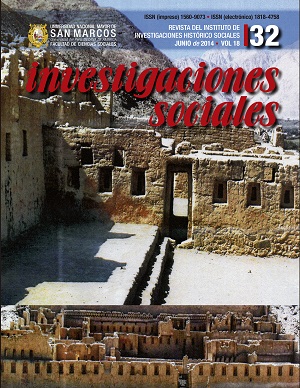La etnia Ishma (Ychsma, Ichma, Ichmay)
DOI:
https://doi.org/10.15381/is.v18i32.10950Keywords:
Señorío, Lima, Pachacamac, ecología, curacazgos, rangos, divinidades.Abstract
Entre los cronistas el primero y único que ha hecho alusión al señorío de Ishma o Ichma es el sacerdote Cristóbal de Albornoz (1582). El informe nal de La visita toledana (1583) permite conocer su perímetro y organización territorial. Estuvo ubicado en el área yunga y chaupiyunga de la hoy provincia Lima. Su espacio abrazaba, por el sur, desde el valle de Lurín, hasta más allá del valle de Lima por el norte; por tanto, no incluía la arroyada del Chillón. Consecuentemente comprendía dos valles: Lima y Pachacamac. Conformó un Estado señorial de estructura teocrática. Pese a haber ocupado un desierto, los habitantes de Lima sobre todo tuvieron un alto nivel de vida, gracias a su pericia para trazar múltiples canales de riego hasta donde pudieran llegar las aguas del río, para dar vida a un extenso vergel y boscaje. En el otro valle, levantaron la huaca al dios Pachacamac, cuyo oráculo fue visitado y consultado hasta por los sapa incas del Cusco. Hay que enfatizar que Ishma, prácticamente, conserva su ámbito territorial preincaico hasta ahora.Downloads
Published
Issue
Section
License
Copyright (c) 2014 Valdemar Espinoza Soriano

This work is licensed under a Creative Commons Attribution-NonCommercial-ShareAlike 4.0 International License.
AUTHORS RETAIN THEIR RIGHTS:
a. Authors retain their trade mark rights and patent, and also on any process or procedure described in the article.
b. Authors retain their right to share, copy, distribute, perform and publicly communicate their article (eg, to place their article in an institutional repository or publish it in a book), with an acknowledgment of its initial publication in Investigaciones Sociales.
c. Authors retain theirs right to make a subsequent publication of their work, to use the article or any part thereof (eg a compilation of his papers, lecture notes, thesis, or a book), always indicating the source of publication (the originator of the work, journal, volume, number and date).






